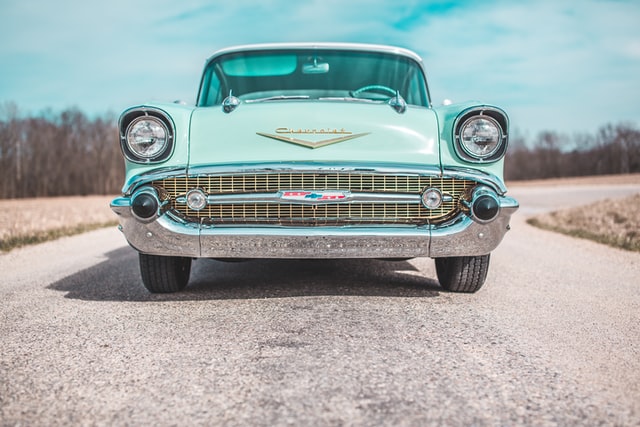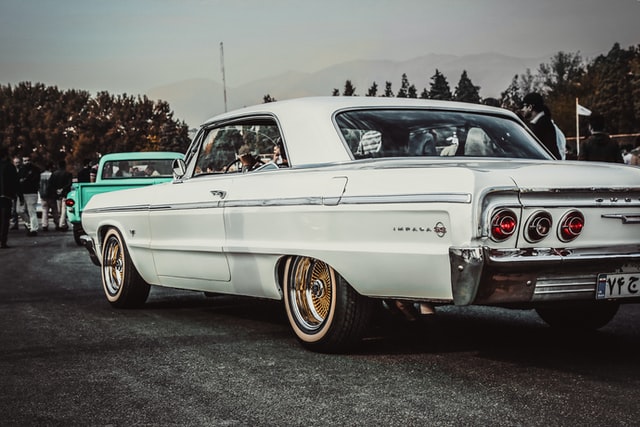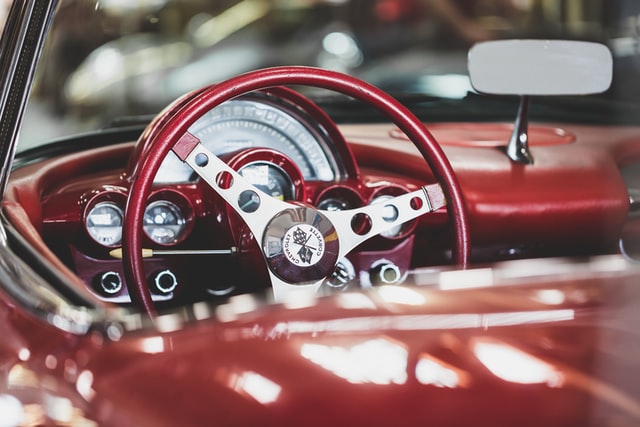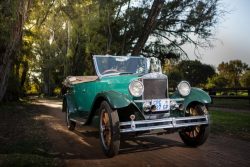The car world can be complex to onlookers who aren't passionate about the area themselves. There is also a factor of preference that comes into play. While some people enjoy a certain make of a car, others may consider it to be one of the worst. If you have people in your life who are interested in cars, there's a chance you've seen them bump heads over their varying opinions of the same car.
Contents
As with most things in life, there is a wide range of opinions and feelings that tie into the differences that can be found among all people and which cars they prefer and what year of that car they think was the best. Even if it's not a current make or model, some people may find that they are most drawn to older cars.
Another thing that will most likely only be known by the people most passionate about the subject is that there is a difference between classic cars and those that are considered antique, and even those that are considered vintage. There are a few factors that help determine which of the three a car will fall into if any. These factors are the price, age, and status that the car holds historically.
Age

When it comes to the age of a vehicle, it's relatively easy to determine which category a car will fall into. Although a lot of people may use vintage, classic, and antique as if they are all interchangeable, the three are three separate entities for a reason and it helps to distinguish some guidelines between the classes.
If a car is vintage, it will have been manufactured between the years 1919 and 1930. A lot of these cars are gone now for the most part, but there are some that have been able to last until now because they were properly taken care of, and there are others that have been restored to their former glory. These cars are seen more frequently than antique cars. You might have the chance to see a few at a car show. There’s also a chance that one might pass you on the road on a beautiful Sunday morning or afternoon.
If a car is considered to be antique, it will have originally been manufactured at some point before 1918, placing the car at over 100 years old at its youngest. Similar to the vintage class, either the cars were taken care of in their day, or they have been restored to look as though they were properly taken care of. You’re not too likely to see these cars outside of car shows or parades.
In order for a car to be considered a classic, it would have to have been manufactured at least 25 years ago. Due to the youth of these cars in comparison to the other two classes, they are more likely to have been taken care of and still functioning, rather than needing to be restored. There’s a chance that these will be less distinguishable from today’s cars as they aren’t all that old.
Historic Status

This factor is a little trickier to determine what a specific car will be considered. The reason for this difficulty is that the qualifications of the historic classes and statuses vary between states. That being said, if your car is considered antique in one state, there's a chance that the neighbouring state won't recognize it at the same status.
Vintage, classic, and antique are three of the statuses that may be acknowledged, but there are several others that may be recognized depending on which state you're in.
Requirements to Obtain Historical License Plates – New York

For example, if you're in New York, the requirements to apply for a vintage license are listed below:
You must have the license plates that were originally issued with the vehicle. That means that if only one plate was issued that year, then that plate must be mounted on the back of the car, but if there were two plates issued, both must be mounted on the car.
The documentation that you must have includes proof of your ownership, insurance, your driver's license, your plates, or a coloured photo of them if you're applying by mail, a registration form, and the form for the vintage plates itself.
Great, but what does that mean for the driver?
If their vehicle is recognized as having a historical status, again, depending on the state, they may have a lower fee for the registration of the said vehicle. This is the state's way of acknowledging that that specific vehicle is not driven as frequently as, say, a daily driver.
From Horse-Drawn to Horsepower

With all that being said, if you’re sure that an antique car is what you’re looking for, there are a few fun facts that you should know. First, this class of cars not only consists of cars that were made prior to the year 1918, but one of the more interesting ways of looking at it is that these cars were the start of motorized travel. The switch from horse-drawn carriages started with steam engines.
Although this was considered monumental at the time (1765), the limitations of speed at a whopping 3 miles per hour would be awfully inconvenient by today’s standards. However, Richard Trevithick would rectify that issue for that time period within approximately 35 years (1801) by increasing the maximum speed of a steam engine to around 12 miles per hour.
Around 60 years later, in 1860, we advanced and moved towards internal combustion engines thanks to Etienne Lenoir, a Belgian engineer. Around 20 years after that, in 1879, the first engine that burned a gas and oil mixture was designed, also known as a two-stroke engine, by Karl Benz. Despite the fact that two-stroke engines are still around today, albeit in a fading out phase, the two-stroke engine was improved upon only 6 years later in 1885.
The four-stroke engine was and still is, favoured due to the decrease in the pollution that comes with it, and the increase in power that it provides. Unfortunately, the two French engineers, Panhard and Levassor, didn’t believe in the future of the Benz four-stroke engine that they began manufacturing and sold their rights to it to a manufacturing firm named Peugeot.
Although Benz did relatively well alone, producing around 2,000 cars by the time the end of 1890 rolled around, the new company could still be influenced. A decade later, Benz received an order from a wealthy man who wanted 30 cars but would only purchase them if they were named after his daughter, Mercedes. From that point on, all German-built cars were referred to as “Mercedes-Benz”.
There was potential for these vehicles to become what was considered to be normal, but unfortunately, the prices were too far out of reach for those who weren’t part of the rich upper class. While Mercedes’ father may have been able to buy 30 vehicles, there were plenty of middle-class people who couldn’t afford one. That was, at least, until Henry Ford made his way onto the scene.
In 1903, Etienne Lenoir’s engine design was used again when Henry Ford founded the commonly known Ford Motor Company and was able to produce the Model T. The Model T took off and became very popular due to its affordable price, practicality, and durability. Although it looked expensive, it wasn’t, and it remained simple in its equipment.
The Model T was what jumpstarted the sudden demand for motor vehicles. Due to this new demand, Henry Ford continued on to make another thing that would stay relevant, even today, the very first moving production line.
By 1913, the assembly line was able to help production jump from approximately 7 cars per hour to over 145 cars per hour. A portion of this speed is thought to be contributed to the fact that the Model T only came in black because black paint dried faster. If a vehicle needed less time to dry, more could be produced, quicker. Unfortunately, WWI halted advancements in both engineering and designing temporarily.
Paving the Path

Without the learning curve from the earliest designs in the motor vehicle industry, we may not be where we are today. These early makes and models were able to work on figuring out the mechanics and technicalities so that today we can worry about fine-tuning these machines that we have come to rely on.
In the 1800s and 1900s, nobody was worrying about whether or not their car would come with GPS or the ability to drive itself. Most people have never even thought about how far cars truly have come and where they started from, but this process has been in the works for hundreds of years at this point.
Without the opportunity to learn some strengths and weaknesses of the engine designs that were first being created, we wouldn’t be able to advance to such a competitive industry where car brands are constantly trying to one-up one another.
Today, we get to worry about maximizing our safety features and trying to design the most attractive car possible. Thinking about the things that some people consider a necessity when car shopping may really seem out of this world when you think about the fact that once upon a time, cars didn’t have much more than four seats and a steering wheel.
Despite all of the changes that we’ve made to get to the point that we are at today, there are still some things that we have kept from the technologies that were developed in the time of antique cars.
Potentially Wasted Potential

Another fun fact, Leonardo da Vinci actually invented the self-propelled car back in 1478, however, it remained an idea sketched on paper and was never actually brought to fruition until a replica was made in 2004 and is now on display in a museum in Italy.
In 1876, George Baldwin Selden invented an internal combustion engine combined with a carriage, but it was never manufactured.
Aside from these two designs that were never manufactured, there were also designs that were manufactured at one point but turned out to be largely unsuccessful. A lot of people put all of their money and their entire life into these designs, so when one inevitably fails, it’s hard to bounce back from that and continue to try to rectify any issues and make a better product.
There were a lot of ideas that probably could’ve been great and therefore would’ve influenced today’s motor vehicle industry, but the stars didn’t align.
Car Features that Stood the Test of Time

You may not be surprised when you hear that some of the features that we still use in our cars every day today are from nearly a century ago, if not longer, but what may surprise you is the fact that some of them may not be as old as you think!
For instance, what would you think would come first in the gradual changes in car production: electric windows or turn signals? If you guessed turn signals, I’ve got some news for you. Even having air conditioning in your car came before the existence of turn signals!
Conclusion

There are a lot of interesting things that not a lot of people know about the origin of the same motor vehicles that so many of us rely on every single day in order to get us from point A to point B.
Taking a look all the way back at antique cars can help clue us in on why we have some of the features that we have in our car today, along with what was tried and eventually left in the past. Seeing the trial-and-error process in our history truly does help us learn from our previous mistakes and avoid making them again in the future.
Even if you’re not interested in owning an antique car, taking a look at the history could teach you a lot about how we’ve been able to get to a place where we have self-driving cars that will keep us in our lane, literally and figuratively.



